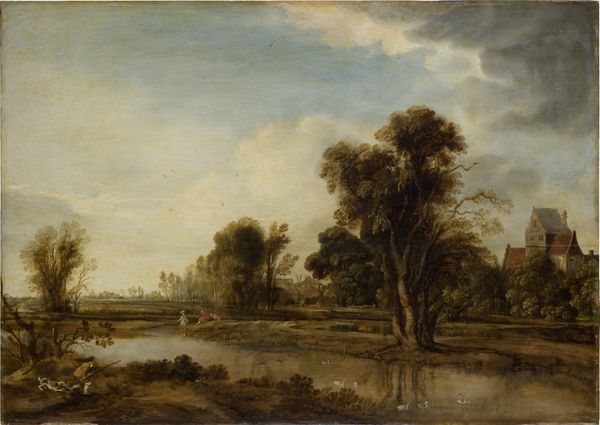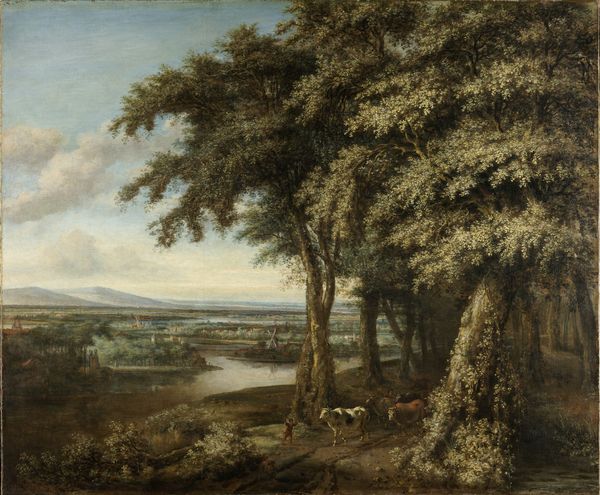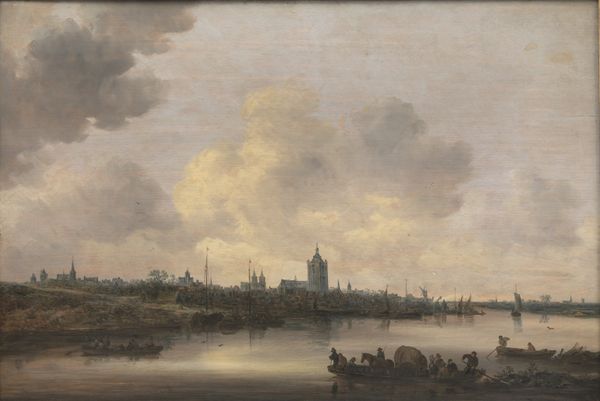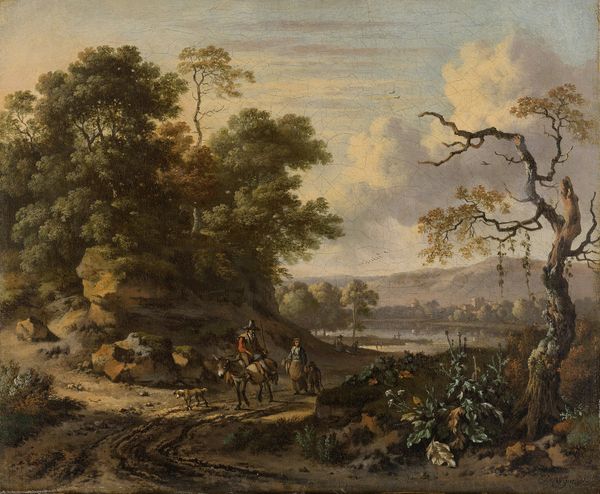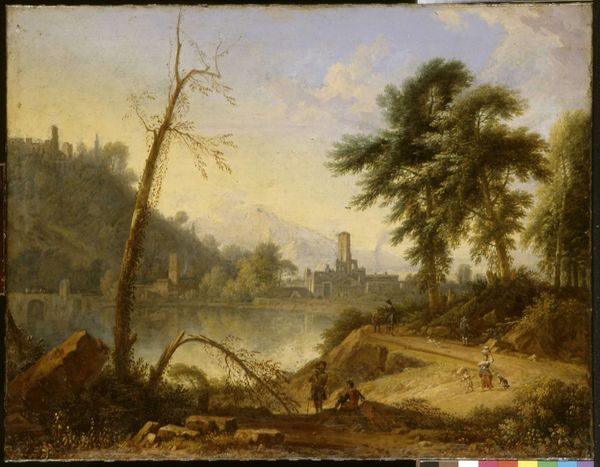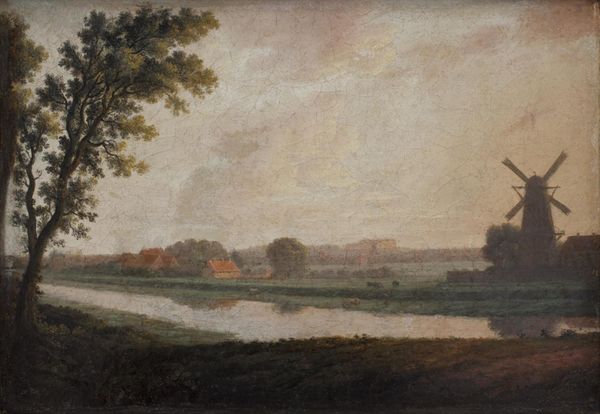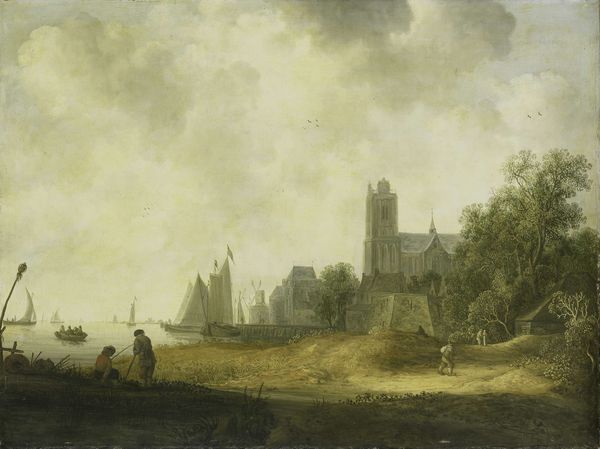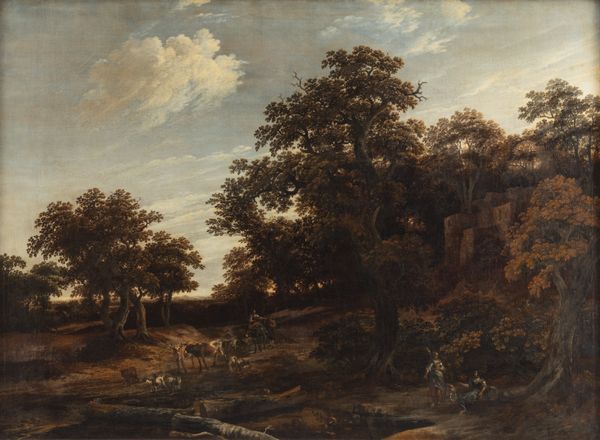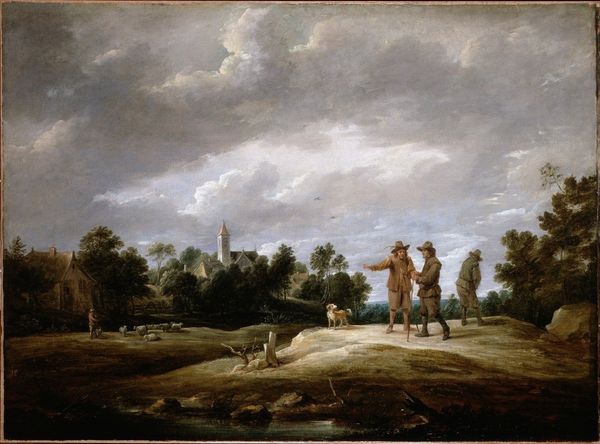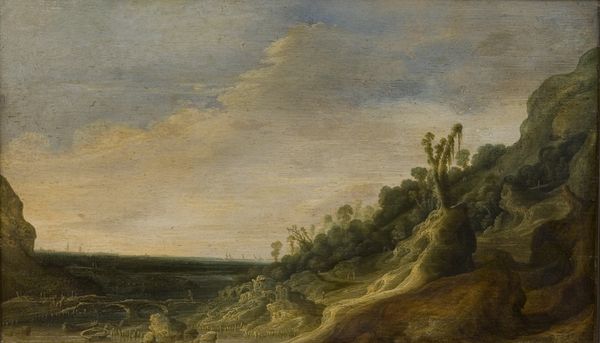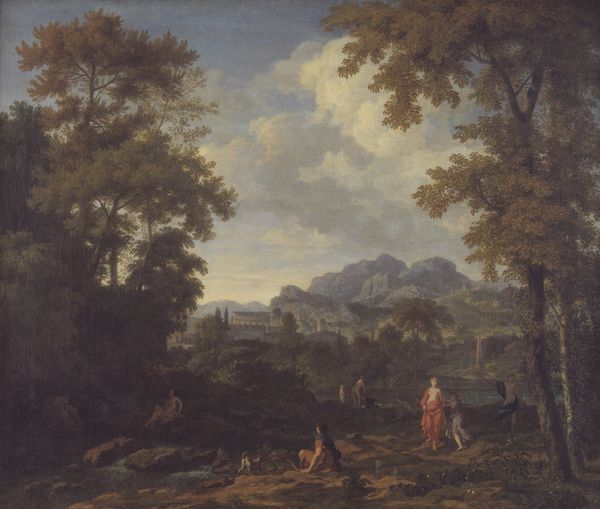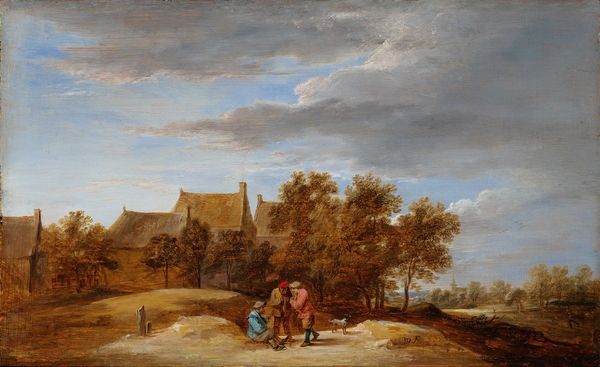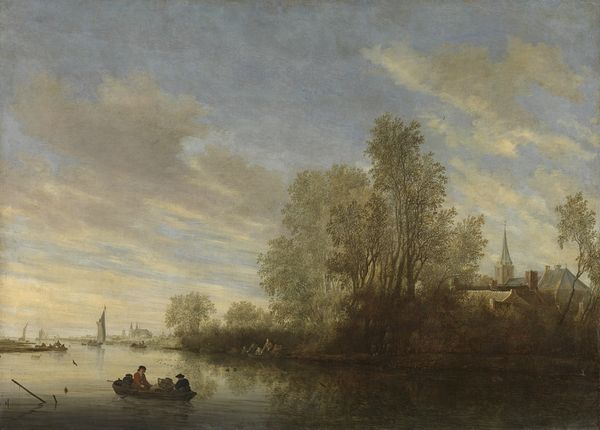
painting, oil-paint
#
baroque
#
dutch-golden-age
#
painting
#
oil-paint
#
landscape
#
perspective
#
oil painting
#
cityscape
#
genre-painting
#
watercolor
#
realism
Dimensions: 36 cm (height) x 52.5 cm (width) (netto), 50.4 cm (height) x 66.8 cm (width) x 6.1 cm (depth) (brutto)
Curator: Here we have Anthonie van Borssom's "Landscape with a View Towards a Town," an oil painting dating back to 1671. Editor: It feels… serene. Melancholic, almost. The subdued palette, the vast, overcast sky… it gives a sense of quiet observation, of a world slightly removed. Curator: Van Borssom masterfully employs aerial perspective, doesn’t he? Note the gradual softening of detail and the shift towards cooler tones as the eye recedes into the distance. It's a hallmark of Dutch Golden Age landscape painting, creating that illusion of expansive space. Editor: The lone figure in the foreground, though… what is he doing? Lying prone, almost hidden within the grasses. Is he working, resting, or perhaps evading something? That figure casts the social dimensions of 17th-century life in Holland in sharp focus – questions of class, labor, and the relationship to the land itself. Curator: Precisely. The composition draws the eye from that foreground figure, along the winding path and river, towards the distant town. Notice how the verticality of the church spire punctuates the horizon line, creating a visual anchor. It's a sophisticated play of line and form. Editor: The windmills in the distance remind us of Dutch dependence on wind power. It serves as an allegory for the role of common labor in facilitating the accumulation of wealth among powerful European states. This piece asks whether industrial progress comes at the cost of exploited laborers, then and now. Curator: One can certainly interpret it that way. However, from a purely formalist standpoint, it’s the subtle gradation of light, the nuanced rendering of textures, that captivates me. The brushwork itself is remarkably economic, suggesting forms rather than explicitly defining them. Editor: And it is through considering the historical moment that such skill emerged! Laborers produced it. Elites like it to further their narratives. We consume it today for entertainment and for better or worse we become a small part of it too. It is quite sobering. Curator: Well, it has given me pause and insight into some critical aspects of Borssom's formalistic skills. Editor: As it has for me regarding some aspects of Dutch labor.
Comments
No comments
Be the first to comment and join the conversation on the ultimate creative platform.
